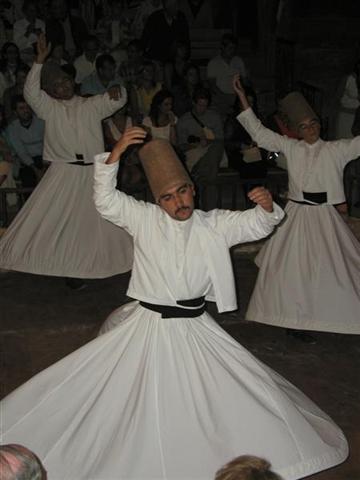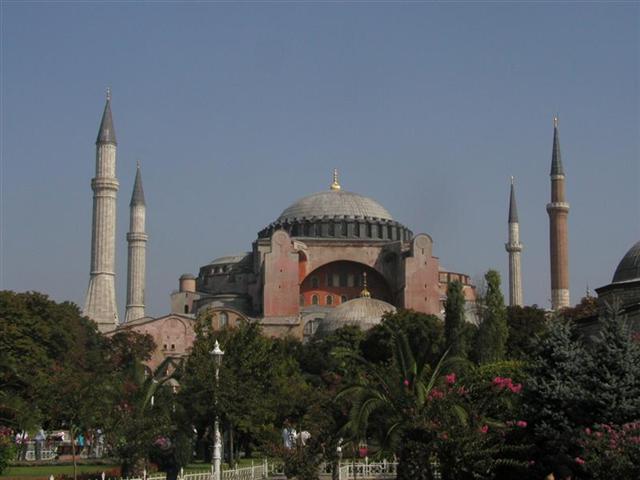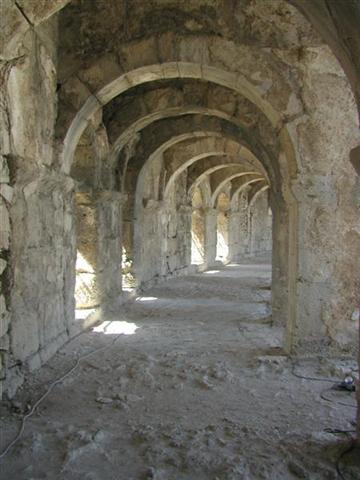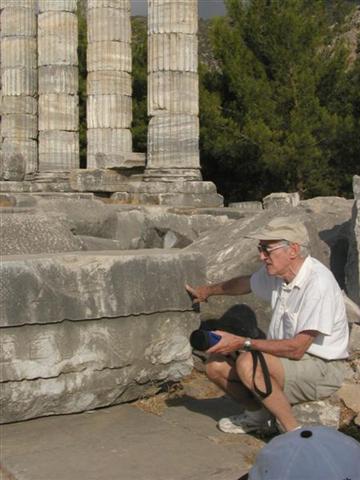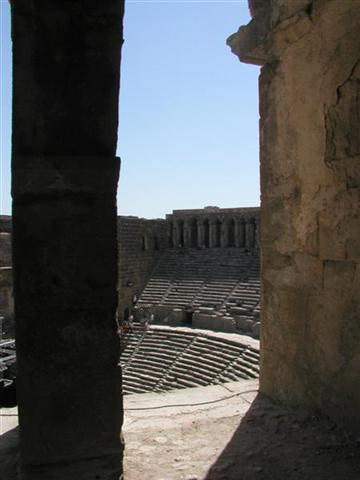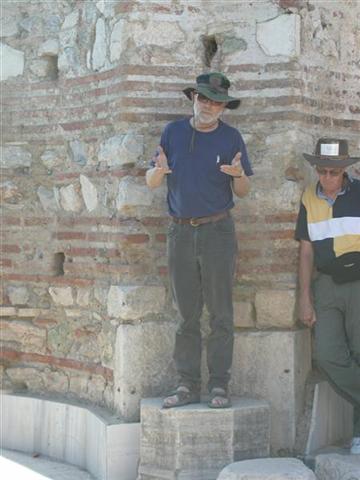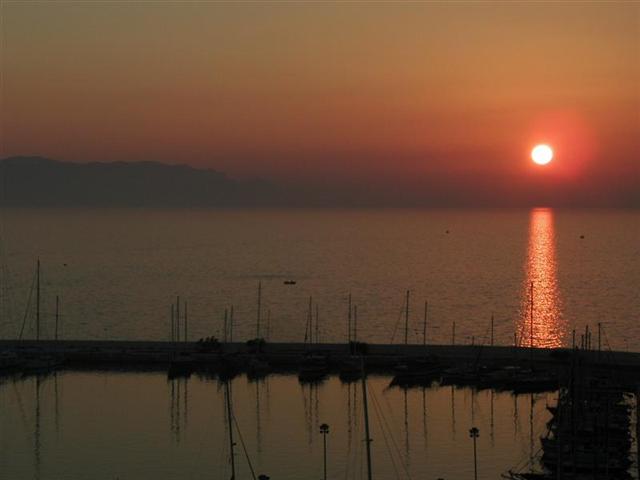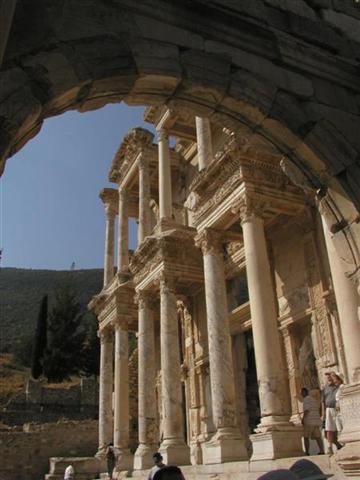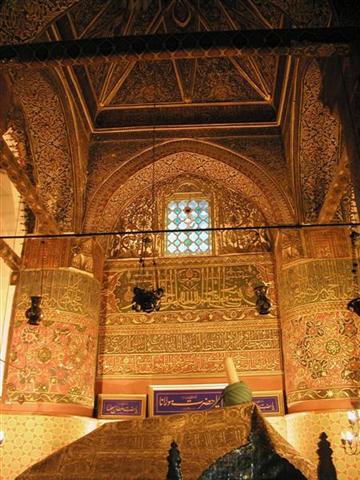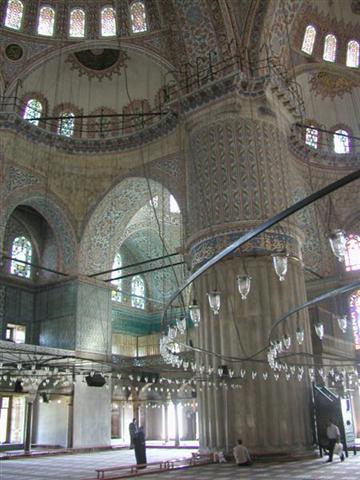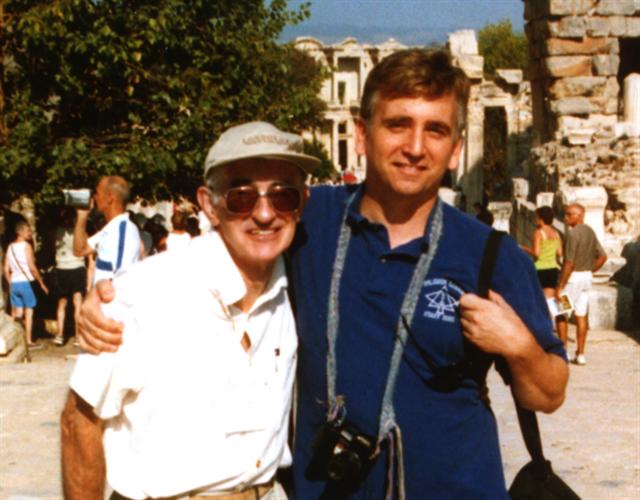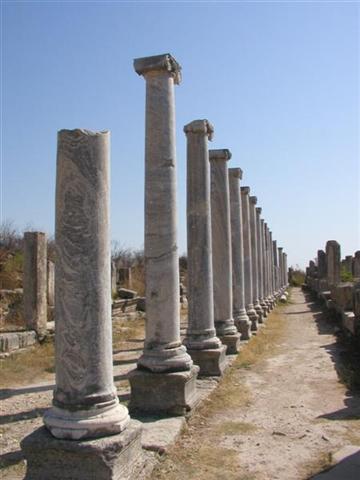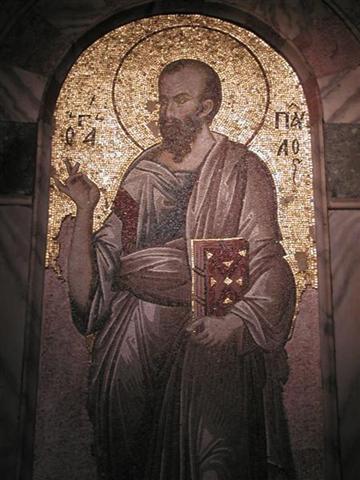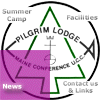 |
|||||||||||||
|
|
|||||||||||||
Sabbatical |
|||||||||||||
|
|

Bryan's Sabbatical Pilgrimage
View the entire Photo Gallery (99 files)
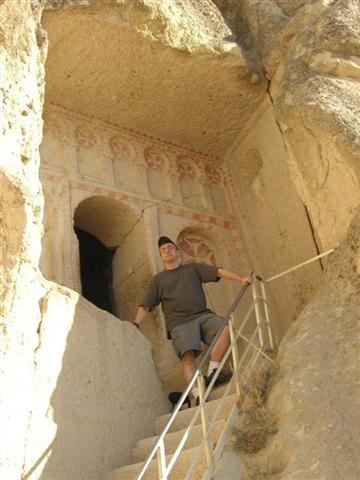 |
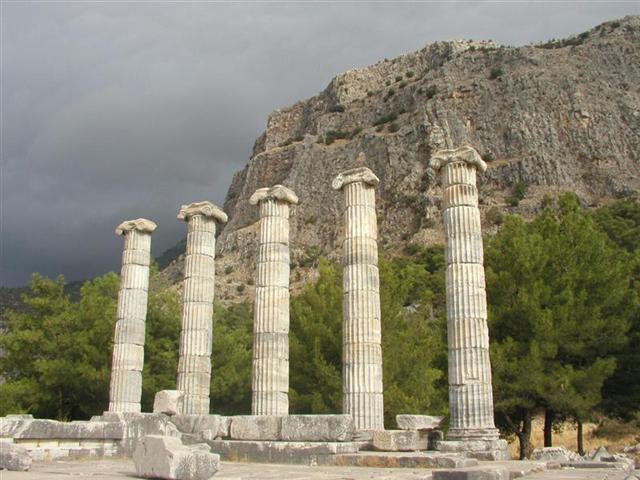 |
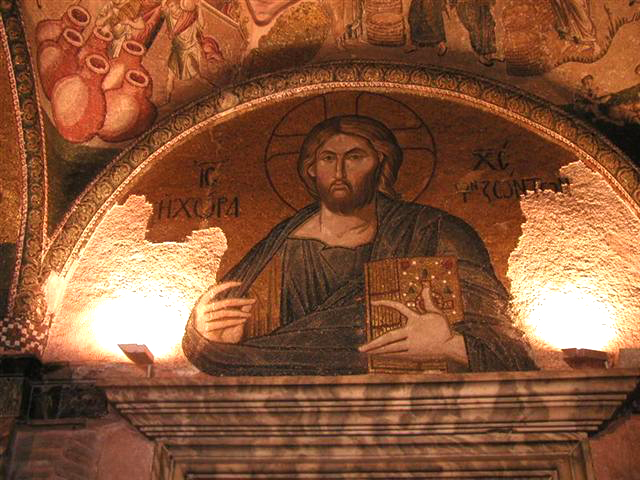 |
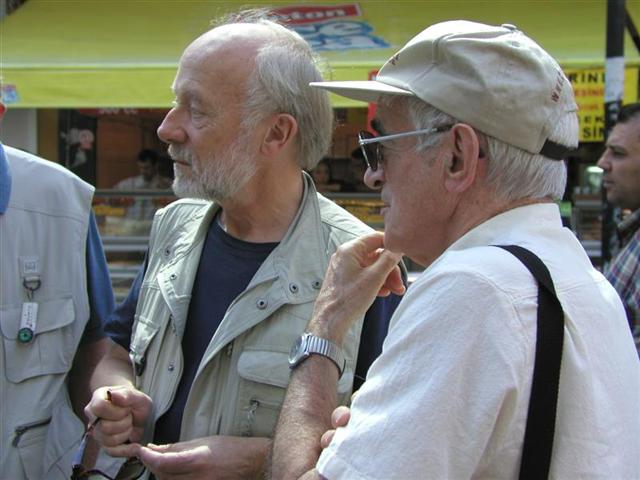 |
Click on a photo to enlarge, use your browser's BACK button to return
Without question the highlight of my sabbatical period was a three week pilgrimage to Turkey. It was renewing spiritually, intellectually, socially and with ineffable synergy as all three of these came together in a way that is both holistic and holy. Since my graduation from seminary I have continued to study the life of Jesus and early Christianity. From this study two New Testament scholars emerged as the most exciting and compelling authors. I read just about all of their work. When I first heard about this trip, I was much more excited about spending three weeks with John Dominic Crossan and Marcus Borg than about Turkey. I'd been to Turkey before and heck, I'd have gone on a pilgrimage to the Aleutian Islands just to be able to dialogue with these two.
At first I dismissed the word 'pilgrimage' as religious hyperbole. And yet, in the course of the three weeks I found the transformation taking place within me and my fellow travelers worthy of the term. This transformation took place through a combination of the lectures we were hearing, followed up by direct evidence at archeological sites; the worship led with an easy manner and deeply centered grace by Rev. Canon Marianne Wells Borg; the diverse and beautiful country of Turkey itself including the overwhelming hospitality of its people; and of course, that magic we at Pilgrim Lodge know so well - the power of Christian community.
I started the trip surprisingly shy. It was odd to be away from my family and I had no idea how wound-up and exhausted I was. It really wasn't the best time for me to be away, or so I thought. It turned out that it was just what I needed to gain a little perspective. Those first three days were kind of tough though. I was unusually quiet and promised myself I'd tell nobody what was on my heart while I worked it through. That lasted until dinner the second night when my roommate Bill and I found ourselves having supper with Marcus and Marianne Borg. I gushed. They were so very pastoral and sincere. I found myself relaxing. The group began to gel quickly and soon all 40 of us had an comfortable familiarity. Meanwhile, I was delightfully surprised to see that Dominic Crossan and I shared a quirky, slightly irreverent, and easily invoked sense of humor. (Don't tell but he BEGGED to have that picture taken with me - how could I say no?) Before long I was happily leading the bus in a rousing chorus of "All God's Critters." (You can take the man out of camp, but you can't take camp out of the man). It was great to be able to enjoy the group dynamics and let my own joy of community come through when it felt right. I really enjoyed my fellow pilgrims.
At night in our hotels, on the bus, and at the actual sites, Borg and Crossan wove a compelling and cohesive picture of first century life in Asia Minor. It was particularly exciting that Crossan, whose work has been focused on the historical Jesus, had just co-authored a new book "In Search of Paul" which has since been released and is a fascinating read. You could clearly sense Dominic's excitement as he brought us to locations and evidence central to his thesis. To round out our education we were blessed with a fabulous Turkish guide. Haluk Cetinkaya is a professor of Archeology in Istanbul and led us with confidence and a great depth of knowledge and occasional political commentary. Borg and Crossan had worked with Haluk before and we could tell why they requested his expertise again.
Our education was so intricate, and interwoven that it is hard to sum up here, but I'll give it a shot:
-
The relation between Latin and Greek Christianity
-
Modern Christianity and Islam
-
Modern America as compared to Modern Turkey
-
Roman Imperial Theology as the normalcy of civilization (necessary to understand a first century worldview)
-
Jewish Covenantal Justice
-
The Radical Paul
-
The consequences of empire building and questions on how it speaks to our time
One of the most striking and unavoidable truths that confronted us again and again was that we were there to study the roots of the earliest Christian churches in a land where Christianity has all but vanished. This was where Paul did a great portion of his work just a few years after Jesus' death. I looked at drawings on the rock walls of churches carved into the side of a hill in the fourth century and wonder how this work of art could have survived centuries of unrest and wondering why the faith itself passed from these shores. It helped me remember that the church is not of itself immortal and its future is not guaranteed without the tender devotion of believers. From my journal: "It is striking how the faith caught on, became usurped by the empire it opposed, accommodated to it, and then disappeared. Empires and faiths fall."
For me, the most profound learning was about Paul. I thought I knew the story and I didn't like most of it. I can't remember how many times I've thought to myself while reading scripture, "well, I guess it's a good thing I belong to the church of Jesus Christ and not the church of Paul." I knew that Paul had not written all of the letters ascribed to him. Through study with Borg and Crossan I began to see that most of what I find difficult in Paul originated in the pseudo-Pauline letters. Even within the genuine Pauline letters there are clear signs that references to difficult themes such as the inequality of women were, in fact, later additions. I also learned a lot about the book of Acts and how to read it critically, similar to the gospels: not as a report of history but as a document of faith.
I began to see Paul in a whole new light. Suddenly he was a mystic, a rebel, a pastor. He wasn't so much about the afterlife, but about being transformed to a new life in Christ in the here and now. It reminded me of my ordination where the quote on the bulletin cover was "Thy will be done on earth as it is in heaven." Heaven is all set, it's earth we've got to work on. We talked a lot about the difference between things being literally true or historically true, and things being metaphorically true (this is one of Borg's main themes). And at the house of Mary I was introduced to the concept of a new kind of truth: liturgical truth.
Perhaps most of all I was intrigued by the concept of the God fearers (sometimes called 'the God worshipers'). If you read the new testament you will hear phrases such as "and those who feared God" or "and the God worshippers..." Frankly I guess I simply dismissed these phrases. It turns out that there was in fact, a group known as the God fearers and that they were, according to Crossan, an integral part of Paul's conversion strategy. The God fearers were gentiles who sympathized with the Jews. They were like the people who come to your church for years, but never join. They didn't want to become Jewish ("circumcision?" - "I'm good, thanks") but were attracted to the Jewish sense of community, tradition and values. Often they gave great sums of money. Crossan and Borg made a compelling case that Paul probably did not walk into the town square and start preaching from a proverbial soapbox. Instead, he went to the capital of the region, found the synagogue and sought out the God fearers. They already were attracted to Jewish ideals, and were able to make the leap much easier than Jews who may have seen Paul's message as heretical. Dominic called this action "convert poaching." This also explains why Paul was not so popular during his travels. At site after site we were taken directly to evidence of the God worshipers. For example in the theatre at Miletus there is a seat with an inscription that reads "the place of the Jews who are God worshipers."
We also studied early Christian house churches. They began to come into focus when we learned about Roman Imperial Theology and the power of images. The Romans were amazing at conveying the message that its rulers, (particularly Augustus) were divine. As a result I began to understand how some of the basic tenets of Paul's theology were shaped. "Augustus isn't the son of God, Jesus Is"; "Roman Justice is this, but Jewish Justice looks like this." And perhaps most striking was the radical opposition to the Roman absolute "First victory, then peace" by Paul's counter theme "First justice, then peace." Paul, like Jesus believed faith was predicated on opposing systems of human domination. In this and so many other ways I now see Paul as a natural continuation of Jesus' teaching instead of an aberration in history who took the word, and the world, in a different direction.
Paul and Jesus were about opposing empire. Are we?
I have always loved reading both Borg and Crossan and I expected to revel in their knowledge and experience. Still, I was so impressed at how approachable they both were. It was clear that this trip was ministry to them. Forty of us bombarded them with questions and dialogue. Without fail these were met with genuine sincerity and a genuine desire to teach. The hospitality they showed was complimented by the graciousness of Sarah Crossan and Marianne Borg who made us all feel like family. I came back humbled in my assumptions, excited about learning, and ready for a new take on history and the relevance of the roots of our faith for today's complex issues. I was blessed to be given the time and means to attend this trip and know that it will long inform my study and shape my faith. Our pilgrimage was rich and full.
__________________________________________________________________
I have resisted the temptation to write about each site, as each would require an essay unto itself. However, I have listed our itinerary below and linked most sites to a photo. Use the 'back' key on your browser to return to the list.
TAKE A VIRTUAL TOUR:
Author John Dominic Crossan narrates a trip through Turkey.
(Flash
plug-in required.)
CHECK OUT A FELLOW PILGRIM'S WEBSITE ABOUT THE TRIP
MORE PHOTOS BY A FELLOW PILGRIM
OUR ITINERARY:
| Day | Locations |
| 1 | departure, USA |
| 2 | Ankara |
| 3 | Ankara, Temple of Augustus, Museum of Archaeology |
| 4 | Cappadocia, Goreme, Apple Church, Ch of St. Barbara, St. Onuphorius Church, Dark Church, Ch of the Sandal, |
| 5 | Old Silver Monastery, Zelve, dervish service |
| 6 | Konya (tomb of Mevlana Jalaluddin Rumi) |
| 7 | Pisidian Antioch, Lake Egridir |
| 8 | Antalya, Museum of Archaeology |
| 9 | Perge, Aspendos, Antalya |
| 10 | Hierapolis, Pamukkale, Laodicea |
| 11 | Aphrodisias Selcuk, Basilica St John, Kusadasi |
| 12 | Ephesus, Mary's House |
| 13 | Priene, Miletus, Temple of Apollo |
| 14 | Izmir/Smyrna, Bergama/Pergamum, Asklepeion, Ayvalik |
| 15 | Bursa |
| 16 | Green Mosque, Green Tomb, Iznik/Nicea, Ch. St. Sophia, Istanbul |
| 17 | Blue Mosque, Hagia Sophia, Hippodrome, Cistern, Kariye Museum |
| 18 | Cruise the Bosphorus |
| 19 | departure |
